“Birth is not only about making babies. Birth is about making mothers…strong, competent, capable mothers who trust themselves and know their inner strength” - Barbara Katz Rothman
Introduction:
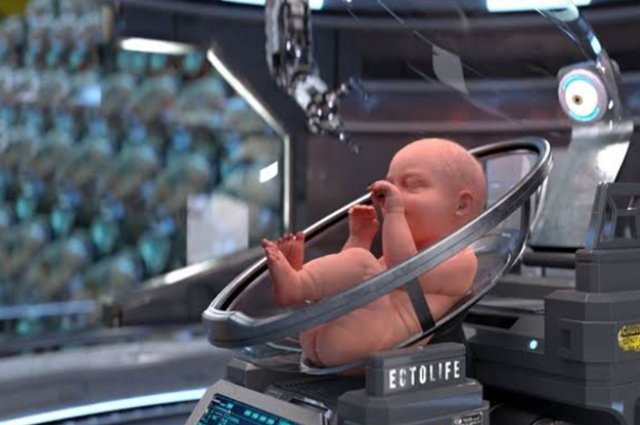
In our society, being mother is not just a biological process or an activity to reproduce but bearing another life and giving birth is itself considered as sacred process. The birth of human life often describes as a miraculous process and mothers are considered as goddesses who has a power to make a whole new life. Motherhood is celebrated and considered as one of the most important milestones in women’s life. Their life is considered as incomplete without child. According to projections by the World Population Review, India has surpassed China as the world’s most populous nation, but at the same time India is facing a serious issue of infertility. According to WHO infertility in India is in between 3.9 to 16.8 %. The most common reasons are late marriages, demanding lifestyles, obesity, excessive consumption of fast food, smoking, drug addiction, higher contraceptive use, increasing number of working women, rising level of tobacco and alcohol consumption, increased prevalence of polycystic ovarian syndrome (PCOS), and sexually transmitted infections amongst younger women, etc. According to the ISAR (Indian Society of Assisted Reproduction), India has a population of as many as 27.5 million infertile people, including men and women. This infertility issue is not only restricted to India but the whole world is facing the same issues. Childlessness has serious demographic, social and health implications. Being labeled as infertile causes a huge psychological and emotional stress to not only the concerned couple, but to the entire family. The women who are unable to give birth due to any reason gets an ill treatment from society, even single mothers are not heartily accepted. The couple who decided to adopt or to use technology to have child faced the same problems through the history. Surely, any society need some time to accept the new ways of living and to accept the new technology. With time our society and newer generation also accepted the technology to solve the reproductive problems they are facing and in today’s world C-section, IVF, surrogacy becomes a day-to-day practice in India and still, we need to understand some downfalls of these technologies. Currently IVF has 70% of failure rate, there is risk of multiple pregnancies in IVF, financial and emotional toll of failed IVF, side effects on women’s body due to treatment, passing years in lots of trial and errors, etc. With all the complexities of the treatment if couple get pregnant then comes childbirth.
Childbirthth is also a very complex phenomenon. Giving Birth can cost your life. Natural childbirth is as old as time itself. With increase medical knowledge, what we have today is medicalized childbirth (pregnancy, labor and birth are viewed as conditions to be treated, rather than as natural process with the popularity of caesarean sections, labor inducing drugs, epidural anesthesia, etc.). Due to this medicalization of childbirth maternal mortality is drastically reduced over past years, but then comes a complication of survival of preterm births. According to UNICEF India, nearly 3.5 million babies in India are born too early. Approximately 1 million children die each year due to complications of preterm birth. Many survivors face lifetime of disability, including learning disabilities, visual hearing problems, lung damage, etc. Overall, the process of getting pregnant and childbirth is so complicated and it include risk of life for both, mother and child. So, in all of the above situation, if you have a safer option of “Artificial womb” where there is no risk of life, even you don’t need a uterus or mother’s body to grow your fetus and you can have your child (biological child) when it is fully grown. Would you like to explore the option? I think that to take the decision you need to understand the concept. So, first we will try to understand,
What is “artificial womb”?
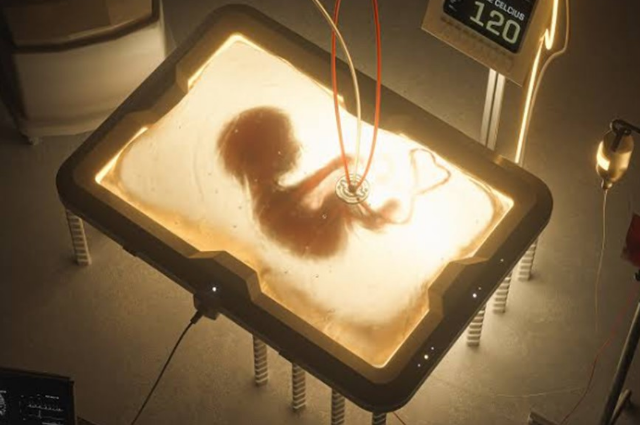
It all started, when I first saw an animated video of artificial womb on YouTube somewhere in month of December 2022. The concept of video was thrilling for me at the same time it scared me. The video was actually made by Hashem AI-Ghaili, who is Berlin based filmmaker. He named the project as “EctoLife: The World’s First Artificial Womb Facility”. Basically, video summarizes that, the so called ectolife (basically a factory like environment) can develop 30,000 babies yearly. Everything from color of skin, eye, height, intelligence can be chosen, genetic diseases can be avoided and many more. Then, I saw some more related video and there is lot of controversy over this topic. Some find it hopeful at the same time some called it the end of humanity. It made me a little skeptical. I remember I have seen something like this in the movie named “Matrix”, but I never thought that this could be a reality someday. We always think that there are things that machines can’t replicate at all and reproduction is one of them. Giving birth to a whole new life has enormous importance in our culture. At the end of the video, they confirmed that the video is just a concept for now and that gave me relief for some time but I decided to do more research on this topic because what is a science fiction today is the reality of tomorrow. Some may think that it’s a useless distraction, there’s way more important stuff to focus right now, but at the same time we must not forget that “Imagination is the beginning of creation”. As few years ago, I am one of those people who thinks that autopilot cars couldn’t be a reality, at least not in India and I am happy, I was totally wrong. In recent years, researchers have taken enormous leap in artificial womb technology and now is a great time to have some conversation about this topic. First of all, we have to accept that what that viral video is claiming is not true, at least for now. This topic is really controversial throughout the years, some people hate it a lot at the same time some people find it useful. To have a perspective on this topic we need to understand it, so in this article we dive deep into what is artificial wombs and how they will change the future of childbirth and pregnancy and decrease preterm deaths.
If you are thinking that artificial womb is a new concept and it will take time to be a reality, then you’re wrong. Artificial womb is just a new fancy word for the old-world concept “ectogenesis”. “Ectogenesis” means genesis outside of the body. Ectogenesis could be partial or complete. “Partial Ectogenesis” is routinely practiced as an incubator to sustain premature babies and in IVF technology. “Complete Ectogenesis” means gestation happens from conception to birth completely outside the human body. The term ectogenesis is coined in 1924 by British scientist J.S.B. Haldane. “Complete Ectogenesis” mainly focused on the growing the whole new human outside the mother’s body. Basically, the Artificial Womb, is a large plastic bag filled with an electrolyte solution similar to amniotic fluid (fluid present inside mother’s womb) which encloses the fetus or it could be like a pod which provides same environment as mother’s womb. The key difference between the present-day incubators and artificial womb is that, premature babies are placed in fluid like environment just like the natural womb. There is no artificial respiration via the lungs as in incubator. Instead, oxygen and nutrients are provided via umbilical cord using an artificial placenta. The goal here is to mimicking the human womb. We need a lot of research and world class technology to do this. So, the next question is,
Are “Artificial Wombs” really possible?
Following are some of the researches that are ongoing in the world that supports the research and development of “Artificial Womb”
1) A mouse embryo has been grown in an artificial womb, humans could be next:

Study published in the journal Nature, Dr. Jacob Hanna described removing embryos from the uteruses of mice at five days of gestation and growing them for six more days in artificial wombs. They created synthetic mouse embryos without using a sperm or egg, then grown them in an artificial womb for eight days, a development that opens a window into a fascinating, potentially fraught realm of science that could one day be used to create replacement organs for humans. Researchers are growing embryo outside the womb for longer than has ever been possible. To date, Dr. Hanna and his colleagues have grown more than 1,000 embryos in this way. He spent seven years developing a two-part system that includes incubators, nutrients and a ventilation system. The mouse embryos are placed in glass vials inside incubators, where they float in a special nutrient fluid. They think that someday they would be able to grow individual organs of human for organ transplant.
2) Scientists have been able to keep premature lambs alive for weeks using an artificial womb that looks like a plastic bag:
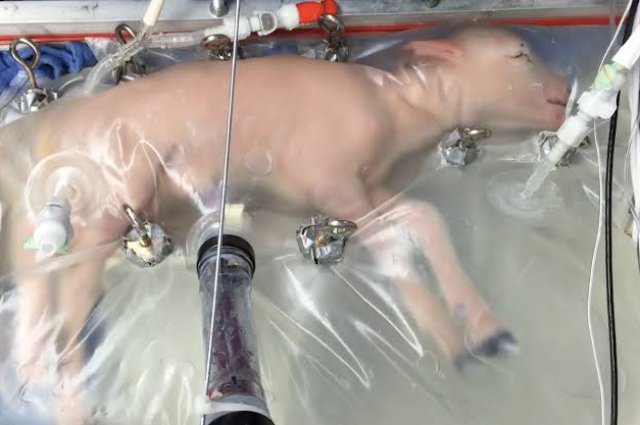
This “womb”, called a “biobag”, is a plastic bag filled with a liquid, which simulates the internal conditions of a womb. A very premature fetus spends several weeks in this bag, which is equipped with a series of tubes connected to the umbilical cord and, therefore, able to supply oxygen to the fetus’ blood. After remaining in this bag, the fetus would be connected to a mechanical ventilator, which would help it to breathe until it is sufficiently developed for autonomous breathing. The ‘biobag’ was tested at the Children’s Hospital of Philadelphia by Dr. Alan Flake, pediatric and fetal surgeon. The experiment demonstrated the biobag’s ability to ensure the survival of a premature fetus up to four weeks after delivery. Human trials may be possible in a few years, according to researchers. First, more tests in animals are needed to check it is safe enough to progress, the researchers say in the journal Nature Communications. The Children's Hospital of Philadelphia team insists it is not looking to replace mothers or extend the limits of viability. It is merely to find a better way to support babies who are born too early.
3) The world's first artificial womb for humans:
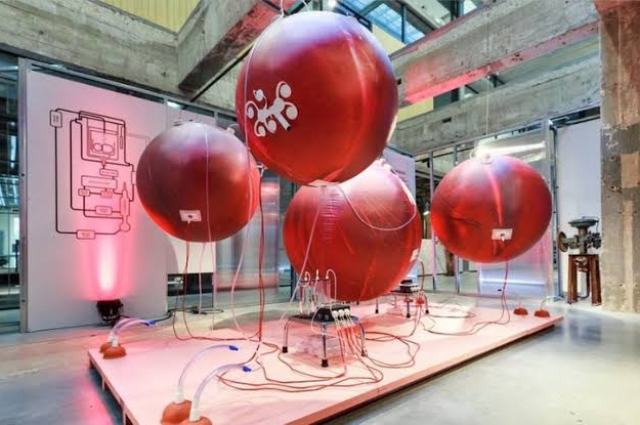
Professor Guid Oei, a gynecologist at Maxima medical center and a professor at Eindhoven University of Technology, Netherlands is working on the world’s first artificial womb for human. Their goal is to help extremely premature babies get through the critical period of 24 to 28 weeks. The Horizon 2020 EU program (Europe’s key funding program for research and innovation) has awarded a research grant of €2.9 million to the Eindhoven University of Technology for researchers to develop artificial womb prototype. The artificial womb would increase the survival chances of premature babies outside of the body, and the developers hope to have the first prototype within five years.
4) Research on IVG (in vitro gametogenesis):
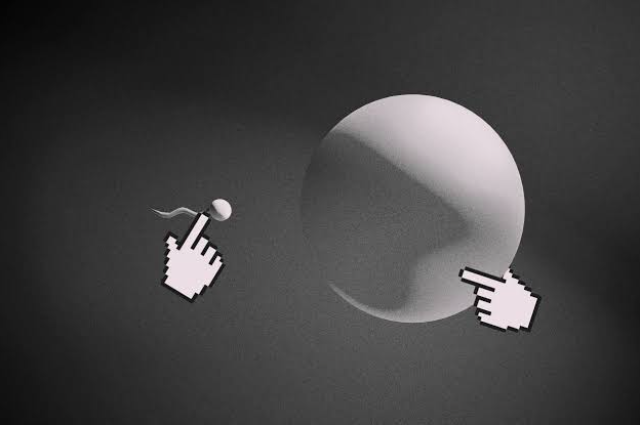
A startup in Berkeley, California is working on IVG. In IVG blood samples are first turned into stem cells, and then ultimately into viable human eggs or sperms. It is not a science fiction but real research which has a potential to allow anyone unable to get pregnant for any reason to have biological children. It has already been successfully performed in mice. It is basically making eggs and sperms outside of the body, inside a laboratory.
All of this research and development shows that this is a major leap. First time, these researches prove that, the critical part of mammal development is possible outside the natural womb. We are having IVF technology, which fertilize egg and ovum outside the body and we also have special incubators, for the babies who born as early as 22 to 24 weeks (about 6 Months). In between that research is going on and I am hopeful that in near future we will be able to save child, who are born anytime without any future complications.
Why we need Artificial wombs?
1) Help premature babies survive:
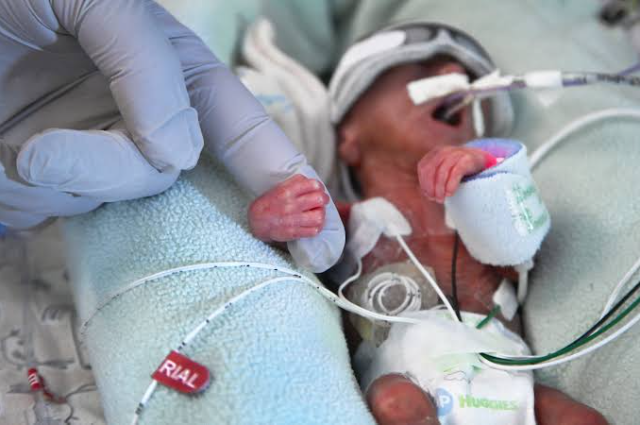
One of the key benefits of artificial wombs is the ability to develop prematurely born babies inside an artificial womb until they can survive outside environment. The most important issue with incubator, is that the baby has to breath oxygen directly by its lungs, which are not fully developed. This leads to severe lung damage and future complications. This problem can be solved with artificial womb. Premature babies often have breathing difficulties, heart defects, immune deficiencies, and other health problems, so it’s no wonder that premature babies account for 17% of all infant deaths. Furthermore, even if a prematurely born baby survives into childhood, they often face chronic health issues such as cerebral palsy, visual and hearing problems, and behavioral disorders. But imagine that a premature baby, instead of having to enter an incubator or survive on its own, could be placed inside an artificial womb such as the Biobag. The baby could continue to develop inside the bag, which could prevent it from suffering the health issues associated with premature birth.
2) Grow organs for organ transplant:
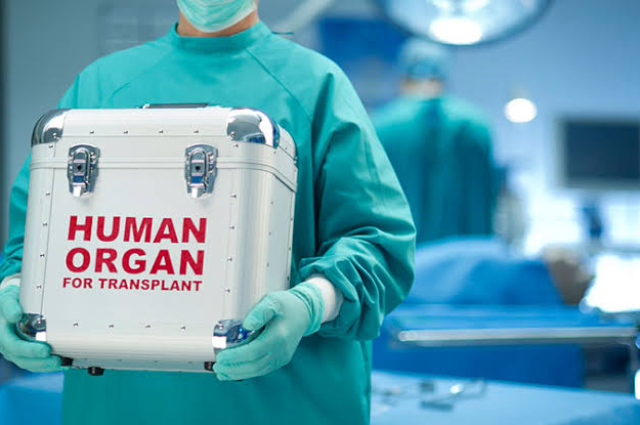
Transplantation medicine is one of the most challenging and complex areas of modern medicine. Transplant rejection is one of most important factors, during which body has immune response to the transplanted organ leading to transplant failure. India has about 4,00,000 registered patients waiting for a kidney transplant. 8000 patients continue to die waiting for an organ transplant every month in India. Researchers say that, artificial wombs can be used to grow individual organs from the blood cells of the person who needs organs and these can remove the barrier of transplant rejection.
3) Learn about human development :
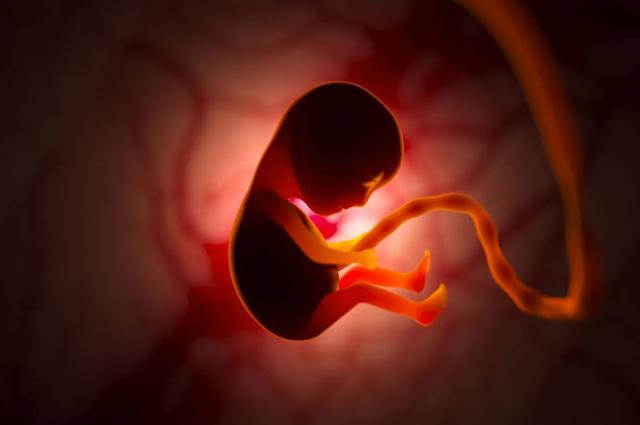
It is really difficult to learn about human growth during pregnancy because it is inside the womb. With artificial womb it is possible to monitor and study the full growth of fetus which helps in understanding the different phases of growth, factors responsible for causing birth defect and many more. The artificial womb may allow researchers to learn more about why pregnancies end in miscarriages or why fertilized eggs fail to implant. Researchers may be able to watch individual cells migrate to their ultimate destinations.
4) Give people more option:

It’s clear that one biological sex faces a greater burden in the reproduction process. Artificial womb which could allow women to develop a child without becoming pregnant, could lift the burden of reproduction from women. Motherhood should be choice not inevitability. Artificial womb is used to give more choice rather than being hard, biological restrictions in terms of how people are able to have children. Artificial wombs could allow the birth of a child without risking the potential health and career hazards that come with being pregnant. And it could be a great option for infertile couple. It also provides an option to transgender women, those who have lost their uterus due to medical conditions and injuries.
5) Same-sex couple could be able to have biological children of their own:
The combination of IVG and artificial womb will allow same sex couple in near future to have their own biological child without surrogate mother.
Ethical concerns:
Ethical and legal questions have always dogged fertility science. If the artificial womb became accessible and affordable then, it will divide society in two groups. There is a possibility of whole societal structure changes. Who will have access to technology? Will it bring on a generation of designer babies? What if this technology could be used in terrified way? It will use to control how people have kids or bread babies and it can be utilized for mass production. It may render women vulnerable to either male assimilation or aggression. It frightens women that Artificial womb will replace women. This is like manufacturing children in factories and many more questions and views. Such ethical concerns always arise whenever we invent new technologies. We must need a satisfied answers to these questions to accept it in society. This technology is still in growth phase but it will not be surprising in next 50 years it will become reality.
Conclusion:
We use technology to reduce risk and pain all the time. Technology always comes with some downfalls and there are always chances that it could be used for wrong purpose. This whole debate is framed as “Artificial womb versus pregnancy” but when we try to understand the whole topic it turns out that artificial womb research is in support of many good things which could save many lives. Even the most extreme version of this is just as an option. With proper regulatory bodies and with good intention if it became a reality, it will be one of the most useful and lifesaving technology. Basically, we need to be optimistic about the future of “artificial womb” as they are becoming more science, less fiction.
